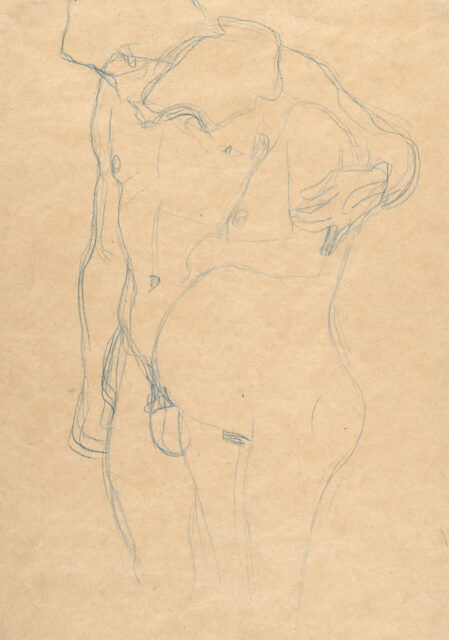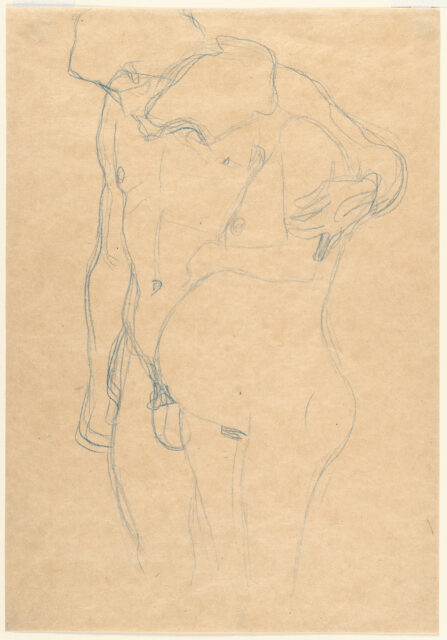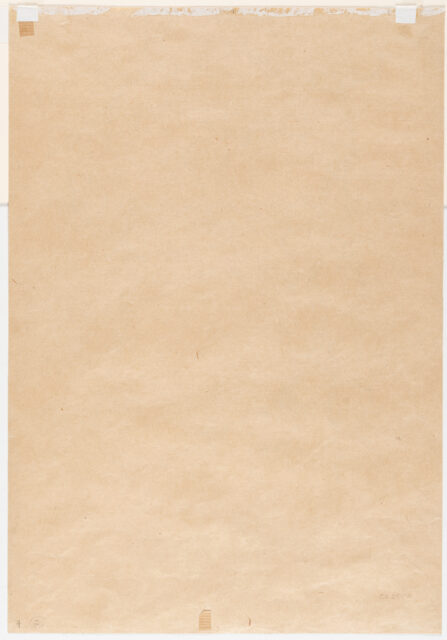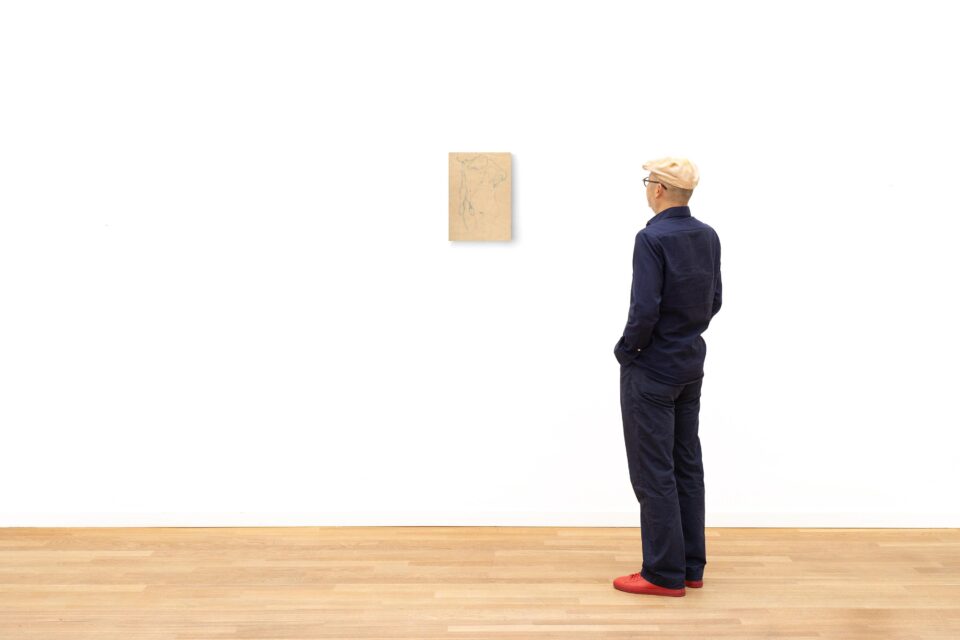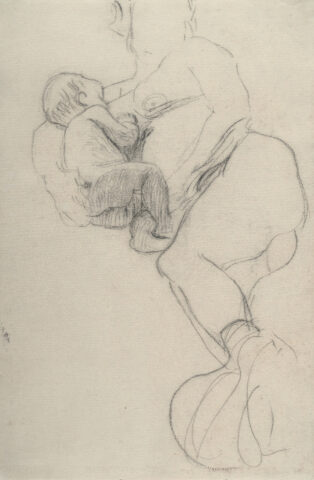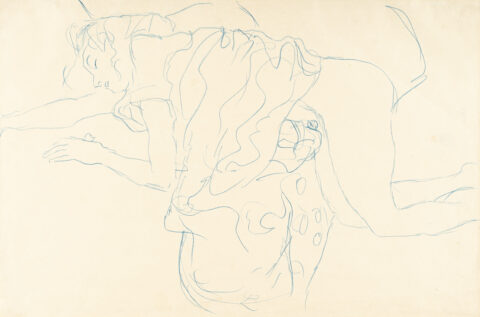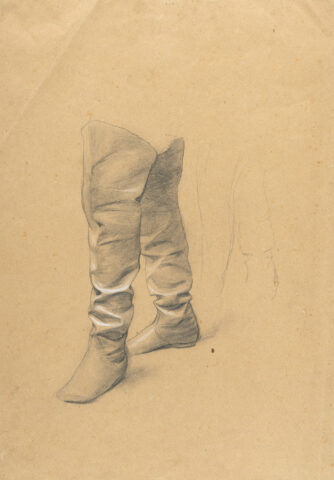
Pregnant woman with man to the left
Details
Strobl 947.
Literature:
Sabarsky, Serge, Gustav Klimt. Drawings/Cento disegni/100 Zeichnungen, Mount Kisco/New York et al. 1983/84, cat. no. 26.
Exhibition (selection):
Gustav Klimt and Henri Matisse, Internationale der Zeichnung, 3rd special exhibition, Mathildenhöhe, Darmstadt 1970, cat. no. 55;
Egon Schiele, Seibu Museum of Art, Tokyo 1979, cat. no. 4;
Gustav Klimt, Isetan Museum of Art, Tokyo 1981, cat. no. 38;
Gustav Klimt. 100 disegni/100 Zeichnungen/100 drawings/100 kreseb, Pinacoteca Capitolina, Rome and others 1983-1997, cat. no. 26 and 20;
Gustav Klimt (Europalia 87 Austria), Musées Royaux des Beaux Arts de Belgique, Brussels 1987, cat. no. 68;
Gustav Klimt 1862-1918; Nassau County Museum of Art, Roslyn/New York 1989;
Centro Social y Cultural de la Fundación La Caixa, Lleida 2008/09;
Spazio Oberdan, Milan 2012.
Provenance:
Collection/Estate Serge Sabarsky, New York;
Collection/Foundation Vally Sabarsky, New York.
Description
– Reduced and at the same time expressive drawing with blue chalk
– Harmonious and intimate depiction of a couple, whose bodies Gustav Klimt has combined into a single entity in his drawings
– Study in preparation for the painting “Hope I”, which is now in the National Gallery of Canada in Ottawa
In 1903/04, in preparation for the painting “Hope I”, Klimt created numerous drawings of the motif of a pregnant woman, which are similar to the depictions in the works “Beethoven Frieze” and “Faculty Painting Medicine” created shortly before. Klimt now adds a man to the motif and combines these two figures into a single unit, similar to the “Kiss” in the Beethoven Frieze. However, here the man and woman are standing next to each other, the man is only slightly turned towards the woman and has a protective arm around her shoulders. It is particularly characteristic that Klimt always depicts the pregnant woman in a strict profile to the left. Thus, “(…) the man’s gestures emphasise the woman’s security, which is also expressed in the position of both heads and the woman’s shoulders drawn forwards. For Klimt, these studies seem to have been of great importance not only in terms of subject matter, but also for formal reasons. He was primarily concerned (…) with the optimal integration of the woman’s body into the outline of the man, whose rather angular forms, the vertical conclusion of the body on the left and the summarised head, shoulders, upper and lower arms on the right, form a very suitable foil. In his depiction of the woman, Klimt endeavoured to capture her figure with a harmoniously curved outline that both made her body shine brightly and was able to express a maximum of volume. As far as the degree of stylisation of the chosen form is concerned, it went far beyond that of the pregnant woman in ‘Medicine’.” (Alice Strobl, Gustav Klimt: The Drawings, Vol. I 1878-1903, p. 273).
In the finished painting “Hope I”, the man supporting the woman has disappeared; instead, skull-like grimaces appear in the dark background. This is possibly due to a stroke of fate in Gustav Klimt’s life: in autumn 1902, his son Otto Zimmermann, with whose mother Marie Zimmermann Klimt had a very close relationship, died when he was only a few weeks old. This personal loss could have been the reason for the “transition from an initially very optimistic to a death-threatened depiction of the pregnant woman” (Strobl, p. 274).
* All results incl. buyer’s premium (27%) without VAT. No guarantee, subject to error.
** All post-auction prices excl. buyer's premium and VAT. No guarantee, subject to error.
*** Conditional Sale: The bid was accepted below the limit. Acquisition of the work may still be possible in our post-auction sale.
R = regular taxation
N = differential taxation on works of art which originate from a country outside of the EU
The private or commercial use of images shown on this Website, in particular through duplication or dissemination, is not permitted. All rights reserved.


